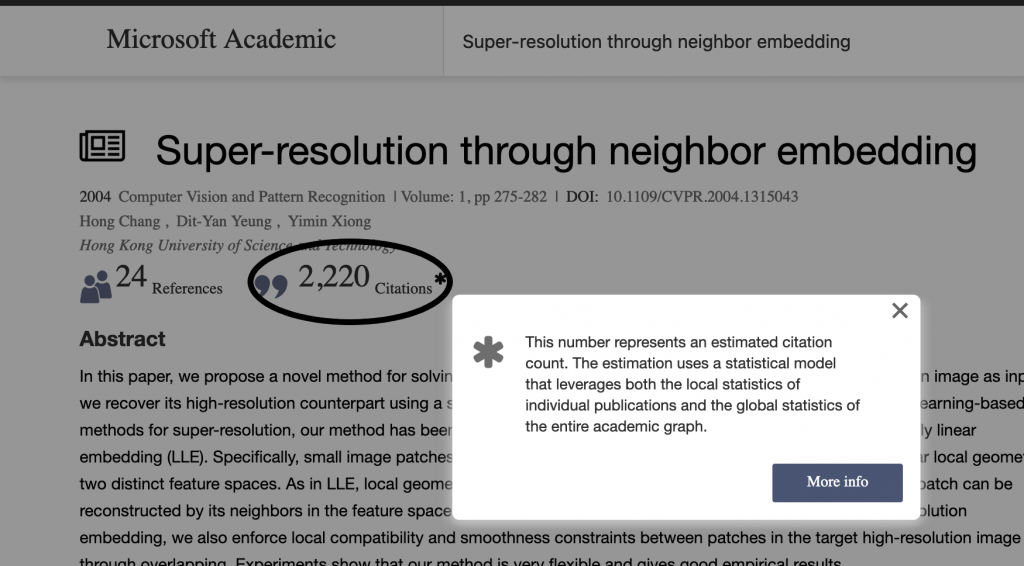You are probably familiar with using Scopus, Web of Science, and Google Scholar to find citations between scholarly works. This week, we look at alternative citation indices that are also powerful, and free to use!
Citation relations between works are important information for researchers:
- Through citation links, we can find more literature on a particular topic, a project or an idea;
- The number of times a work is cited more or less tells its quality or impact;
- For researchers, the total number of times a scholar’s works are cited is a common measure of personal impact.
The “Old Friends”
For a long time, Scopus and Web of Science are the two databases that have established themselves as the “go-to” places for citation searching. The Library subscribes to Scopus, and the major subsets of the Web of Science Core Collection. Google Scholar (GS) is a free option to track citations. Because it indexes a vast pool of academic documents using web crawlers, it often returns much higher citation counts than the two subscription databases, which focus on selective peer-review publications.
Some New Faces
In the past few years, we see various literature search tools emerging. In previous Research Bridge posts, I introduced Semantic Scholar, lens.org and Dimensions. This time I am going to highlight Microsoft Academic, Lens and Dimensions, with a focus on their features in citation searching.
Microsoft Academic
Microsoft Academic (MA) is a free academic search engine by, obviously, Microsoft. Similar to GS, it builds the database using web crawling; but unlike GS, it allows access to its data via API.
Since it crawls the web for academic documents, we would expect the citation counts on the high side. The count for each paper is prominently shown at the top; and the citing references are listed at the lower part of the screen. You should note that citation count at the top is an estimate based on their database and statistical model; the actual citing references in the MA database is smaller. One example is shown in Figure 1 and 2. It estimated 2,220 citations, but the actual records it can show was 1,404.

Figure 1

Figure 2
One inconvenience with both MA and GS is that their user interfaces do not give you easy ways to export records in bulk. In MA, you can add records one-by-one to your “Reading List”, and then export from there.
Lens
Lens is a free resource that provides a lot of interesting functions for exploring research literature. It contains patent records, and integrates scholarly records from multiple sources:
- PubMed
- Crossref
- Microsoft Academic
- CORE
- PubMed Central
Since MA is a data source of Lens, we can expect that what we can find in MA can also be found in Lens.
Lens show you citing references from patents as well as scholarly works (Figure 3). When you display the citing works, you can use the export function to extract the records in bulk (Figure 4).

Figure 3

Figure 4
Dimensions
Dimensions database contains records of many types, including publications, patents, clinical trials, policy documents and grants. The basic search within publications is free to use. Searching for other document types requires subscription.
Once you open a record of a paper, you can see the citation count at the “Dimensions Badge” (Figure 5); when you display the citing references, you can export the list (Figure 6).

Figure 5

Figure 6
Strengths and Limitations
Let us make a quick comparison of these citation searching tools:
| Scope | Functionalities | Cost | |
|---|---|---|---|
| Scopus, Web of Science | Selective journals and conference proceedings |
|
Library pays for subscription |
| Microsoft Academic, Google Scholar | Academic documents in the Web |
|
Free |
| Lens, Dimensions | Integrating multiple sources |
|
Free (Lens) or freemium model (Dimensions) |
The emerging tools can be good alternatives to Scopus and Web of Science in some ways; however, the two established databases are still strong in functionalities including searching and bulk export. At the time of writing, they are the ones that let us easily pull out all citing references to an author in one search. Microsoft Academic can list citations at the author-level, but it doesn’t let you export multiple records easily. Furthermore, some institutions request researchers to present certified citation counts in these two databases when applying for jobs, awards or grants.
This blog post presents an overview of these tools in tracking citing references. How about the quality of their citation data? GS and MA find higher counts than Scopus and Web of Science, what are those extra references? To find out, I compared the citing references of three HKUST papers in these databases; I will share the results in the next post. Please stay tuned!
— By Gabi Wong, Library
Views: 1025
Go Back to page Top
- Category:
- Research Tools
Tags: Citations data, Dimensions, Google Scholar, Microsoft Academic, The Lens
published December 1, 2020


